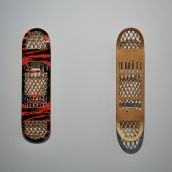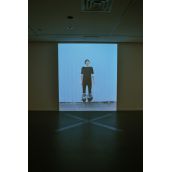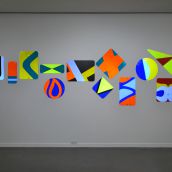K'JIPUKTUK (HALIFAX) - 'Beat Nation: Art, Hip-Hop and Aboriginal Culture' is currently on display at the Dalhousie Art Gallery and Saint Mary's University Art Gallery. The showing brings together more than 20 artists from across North America who question aboriginal identity through hip-hop culture.
With its mixture of mediums, including paintings, sound exhibits, installation and film, the show expresses the many ways a generation of artists have used hip hop to re-interpret what is means to be aboriginal, while at the same time confronting notions of stereotype and cultural appropriation.
The exhibitions' title 'Beat Nation' points to the ways hip-hop has become a driving force for activism in urban aboriginal communities over the past two decades. Although at first it seems the stylish edge of hip-hop does not fit with the stoicism of traditional aboriginal art, both visibly share in the art of storytelling.
For aboriginal artists, hip-hop has allowed them the chance to re-mix the new with the old and to re-invent a visual language that speaks to the current realities of urban aboriginal life. As you walk through the gallery it is easy to find yourself surprised by the graffiti murals of Haida figures or skateboards carved from animal bone. But these are visual reminders of the changing definition of what it means to be aboriginal today.
In Anishnaabensag Blimskowebshikgewag (2012), Métis artist and art historian Dylan Miner, revisits the theme of migration, a major part in the history of all aboriginal peoples.
His work involves four low-rider bicycles, each of which are designed by an emerging aboriginal Vancouver artist. The bikes are coloured with the four cardinal directions, black, red, yellow and white‚ and are decorated with furs, traditional beadwork and feathers. Miner's playful look at contemporary transportation methods as mediums of traditional myth introduces viewers to a new chapter on an ancient narrative.
Like any good hip-hop beat, the exhibit has an electric feel to it, created by the visual rhythm of artistic invention coupled with diverse imagery. The show's hybrid of modern and traditional art is best illustrated in the work of Jordan Bennett, a Mi'kmaq artist from Newfoundland's west coast.
His three works, Marrow Truck (2008), Carved Skateboard (2009) and Turning Tables (2010), discuss ideas of traditional aboriginal craft and artefacts in contemporary society. In Turning Tables, for example, he used walnut, spruce and oak to built a set of wooden turntables that play sounds of him learning his Mi'kmaq language.
Many of the artists in the show, as in real life, explore aboriginal identity through the lens of popular culture. One of the show's most intriguing pieces belongs to multimedia Cree artist Kent Monkman and his stiletto-wearing transvestite alter-ego, Miss Chief Eagle Testickle. In a video performance titled, Dance to Miss Chief (2010), his alter-ego seductively dances in a music video to stereotypical images of an aboriginal character as often seen depicted in an old western films.
Similarly, a number of works featured are from well-known hip-hop artists and music producers, such as Bear Witness of A Tribe Called Red and Jackson2Bears. In a series of video-installation, these artists remix traditional sounds of throat singing and drumming with historical footage to reclaim the Canadian aboriginal identity.
As aboriginal identity and culture continues to be change, artists will keep turning to images of status and rebellion to express their struggle. From Rolande Souliere's large-scale installation of street barrier tape that represents the government's control of land claims, to Sonny Assu's 67 mounted gold records that stand for every year the potlatch was banned in Canada, the show resounds loudly with a call to sovereignty and political action.
Now in its closing week, Beat Nation was curated by the Vancouver Art Gallery and brought to Halifax through a grant from the Museums Assistance Program, Department of Canadian Heritage.
The exhibit has been dedicated to the memory of Loretta Saunders and to a call for a nation inquiry into Canada's murdered and missing aboriginal women.
![In Turning Tables, artist Jordan Bennett used walnut, spruce and oak to built a set of wooden turntables that play sounds of him learning his Mi'kmaq language. [All photos: Stephanie Taylor] In Turning Tables, artist Jordan Bennett used walnut, spruce and oak to built a set of wooden turntables that play sounds of him learning his Mi'kmaq language. [All photos: Stephanie Taylor]](../../sites/mediacoop.ca/files2/mc/imagecache/squarethumb_medium/dsc_0110_1.jpg)







